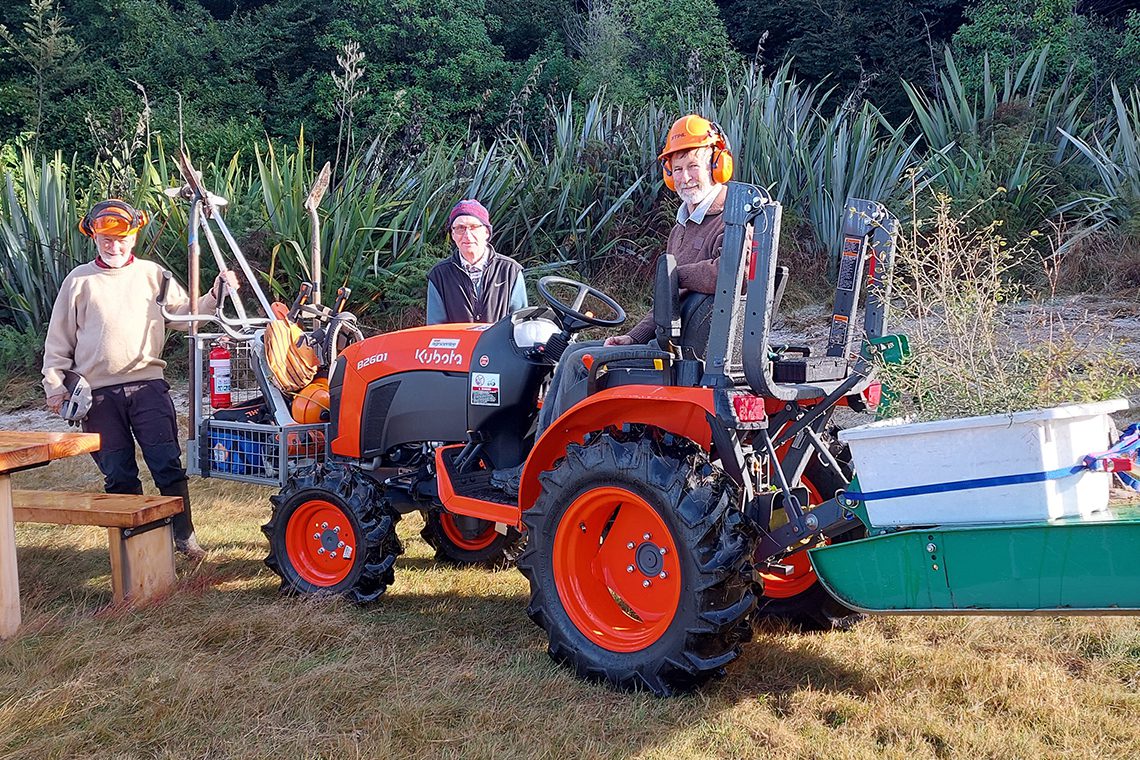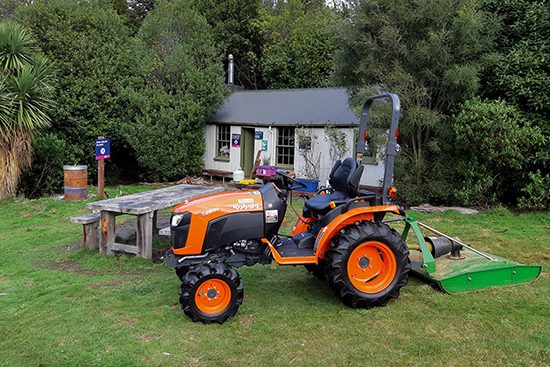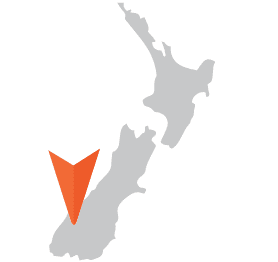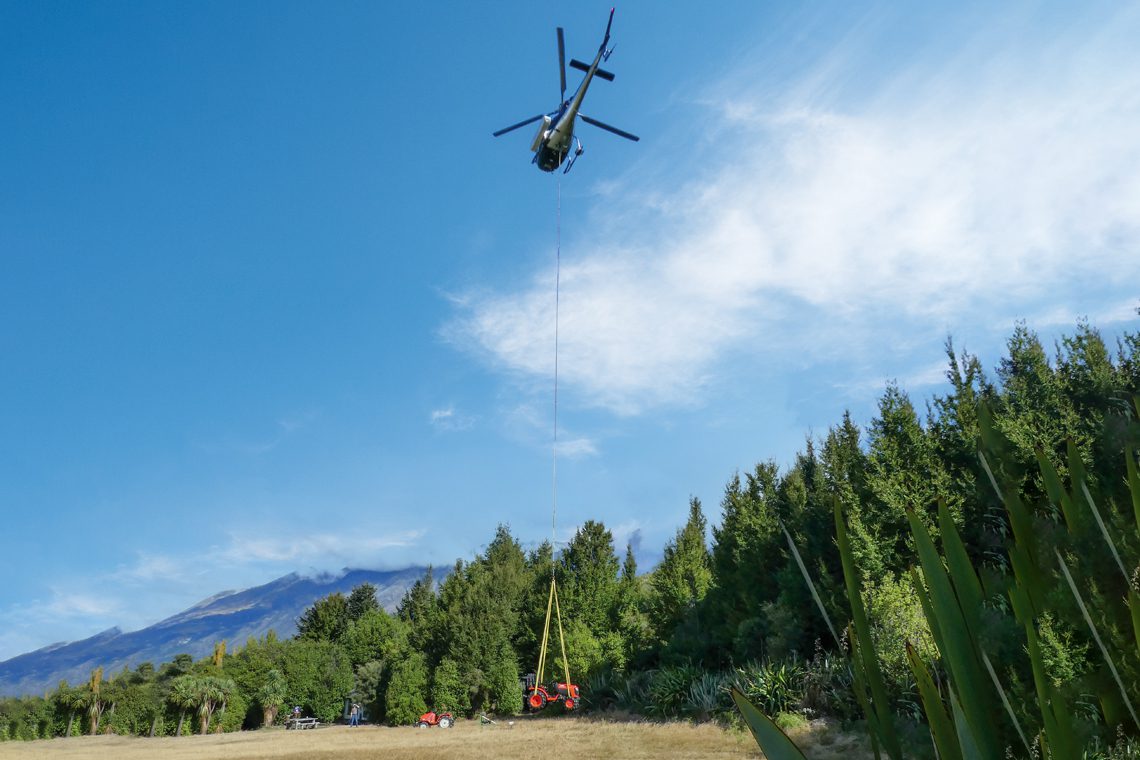Home » All Issues » Issue 2 » Carrier to Pigeon
Carrier to Pigeon
There’s a saying pigs may fly. Little did we know, a picturesque island in New Zealand would test the saying for tractors early in 2022. But first to the story….
If you travel to the southwest corner of the Otago region in New Zealand’s South Island, you’ll be greeted by New Zealand’s longest and third largest lake. The remnants of an ancient glacial valley, Lake Wakatipu sits beneath the backdrop of The Remarkables mountain range.
Frequented by thousands of locals and tourists every year, the lake is one of New Zealand’s untouched natural beauties. Nestled within is Pigeon Island – the largest island on the winding lake and only accessible by boat or helicopter.
Home to a unique array of New Zealand flora and fauna, many of its local species are not found in the rest of Wakatipu’s basin.



“THE WAY BIRD POPULATIONS AND VEGETATION HAS FLOURISHED ON THE ISLAND IS PHENOMENAL, IT REALLY IS A BEAUTIFUL, PEACEFUL PLACE FOR THE COMMUNITY TO ENJOY.”

Pigeon Island’s location keeps the temperature regulated and its mild climate allows trees like Kahikatea to grow. Free from stoats and other predators, the landmass acts as a refuge for a range of birdlife including the Tūī, Kererū, Pipipi and Yellow Crowned Parakeet.
The island was gifted by the Crown to the Queenstown Borough Council in 1875 for the people of the region to enjoy. In the late 19th century, environmentalist Richard Henry set up base on Pigeon Island while leading some of the first conservation efforts in New Zealand on neighbouring Resolution Island, translocating endangered birdlife away from the mainland.
For many years following, however, the island was used for farming purposes, with a sole farmer using the island for cattle and livestock. This resulted in much of the island’s lush, thick forestry being cleared.
Now, over one hundred years later, the area is back in the hands of dedicated New Zealanders who aspire to return Pigeon Island to its former glory.
Following devastating bushfires in 1996 and 2002, locals began restoration efforts on Pigeon Island to replant the felled forest.
As these efforts continued and the volunteer base grew, the community formed an organised group named the Wakatipu Island Reforestation Trust to coordinate its revegetation, education and advocacy projects.
The original trust consisted of three members but has now expanded to five, including two retired school teachers, a retired building inspector, a retired ranger and botanist, a retired surveyor and a retired farmer.
Volunteer and Botanist Neill Simpson first visited Lake Wakatipu in 1984 with the Deputy Mayor while working for the local council as a ranger.
“Back then the island was used mainly as a party location and people had no respect for the land. People would drop cans everywhere and leave their fires going. That is how both bushfires started. At the time there were still a few sheep left on the island too,” Neill said.
As a passionate botanist, the unique flora of Pigeon Island drew Neill back where he would end up leading the restoration efforts and team of volunteers.

“Seeing the changes from when we first started has been incredible. The vegetation has grown back, and with no predators on the island, we have seen the return of Bellbirds, Yellowheads, and even the endangered New Zealand Falcon, which can nest on the ground,” Neill said.
“To date, we have planted roughly 40,000 natives, and the forest is currently at a stage where germination can occur naturally. Now we just focus mainly on planting specialist trees, keeping the public huts tidy and ensuring the hiking tracks are open and clear.”
Volunteer and retired farmer Tom McPhail first visited Lake Wakatipu as a child in 1956, where he holidayed with his family. Recently handing down his sheep farm to his sons, Tom is the newest member to the trust, bringing his agricultural knowledge to the island.
“The first thing you notice when you come to Pigeon Island is the bird life; the sounds are so peaceful,” Tom said
“We all enjoy going to Pigeon Island any chance we can, so we often use my boat to get there for the odd weekend to complete smaller tasks.
“However, every November we head to the island for maintenance and restoration works. Roughly a dozen trustees and volunteers are on the ground for a week to clear the tracks and fields; it can be quite the job.”
In April 2022, the Queenstown Council purchased a new Kubota B2601HD tractor to help the trustees tackle a range of maintenance jobs across the island.
Due to Pigeon Island being isolated, the team had to get creative with how they would transport the tractor in.
“The tractor was delivered in an unusual and exciting way. It was flown in by a helicopter. It was quite the sight to see, but it was worth it. We use the tractor for more than just clearing the paths, it’s also used to mow the fields by the huts, as well as transporting equipment around the island,” Tom said.
“Our new Kubota has safety features we didn’t have previously and just handles better. From power steering to more comfortable seating, it makes clearing the tracks all the easier.”
For Neill, Tom and the rest of the Wakatipu Island Reforestation Trustees, Pigeon Island has transformed dramatically since first getting involved.
“The way bird populations and vegetation has flourished on the island is phenomenal, it really is a beautiful, peaceful place for the community to enjoy. We hope this is a legacy that continues well into the future,” Tom said.